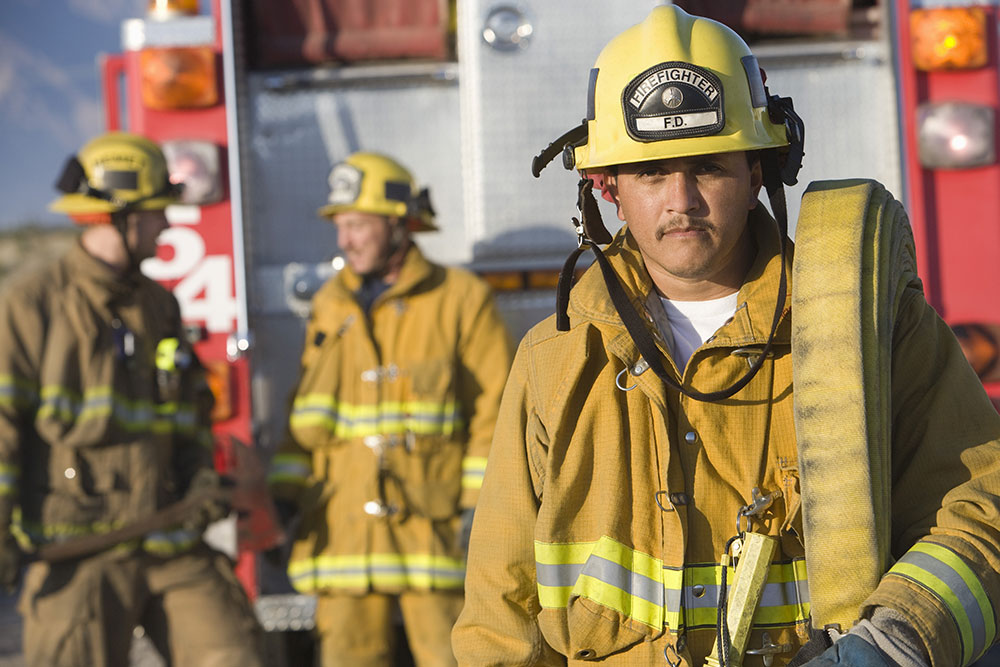Summer 2024
The Recovery Standard Project

A shift schedule is inevitable when working in public safety. This concept is deemed “part of the job” for many roles associated with being a first responder, such as fire and rescue.
Within the world of firefighting, dialogue, and discussions begin to develop: Which schedule is best? What is our schedule doing to us? Can we make the most out of our current schedule?
Although all these questions are valid, where do we begin to acquire the data to make judgment calls? What do we reference to justify transition or even justify maintaining our status? With these questions increasing, investigators at the Texas A&M University-Commerce ROARHP Exercise Physiology Lab brought a physiological way to answer the questions. Even then, the project being in its starting stages, has the potential to shed light on possible solutions within the world of shift scheduling.
What is the Recovery Standard Project?
The Recovery Standard Project was founded (and named) by tactical researchers Hussien Jabai and Dr. Michael Oldham, to provide nationwide agencies and departments with tangible biometrics that analyze the physiological adaptations to shift schedules. This initiative began as a pilot program, observing the recovery patterns of firefighters in Texas on a 24-hour on and 48-hour off schedule. With that said, this frequency of work is commonly interrupted by overtime shifts obtained by personnel (regardless of the reason why, it happens).
The preliminary findings of the study were very insightful and expanded into a conversation with other agencies requesting a comparison with the 48-hour on and 96-hour off-shift schedule. Due to internal university awards and grants, the investigators could assess a sample of 24/48 and 48/96 during a 3-month timeline. The identity of departments remains confidential at this time. With time and awareness, the project expanded. An agency in Virginia reached out to the team to observe their current shift schedule, a modified Kelly schedule. With the growth and development of efforts by the research team, the project will continue to perform, produce, and thrive based on the awareness, support, and efforts of the agencies that drive wellness initiatives.
In doing so, the project outlines the following purpose:
- Provide a platform to assist participating firefighters in observing data to help regulate their off-shift physical activity.
- Provide a means for participating firefighters to understand the impact that sleep, nutrition, job tasks/workload, and physical activity have on the body.
- Provide a line of communication for personnel to engage in conversation with collaborating parties regarding fitness and nutrition.
- Provide insight on the impact of specific shift work on participating firefighters’ recovery.
- Assess the difference in recovery rates/patterns when comparing various shift schedules associated with public safety
What instrument or device is being used to monitor personnel?
Participants in this study utilized WHOOP® straps, which are wrist-worn devices that monitor health metrics, such as sleep patterns, heart rate/resting heart rate, respiratory rate, blood oxygen, and skin temperature. The vital metrics we focused on were observing both HRV and daily (accumulated) strain.
- 3-Tier System to Research Development
- The tactical research team always approach questions and projects as follows:
- Observe what is currently going on. (Observation) If you can measure it, you can manage it.
- Implement a change or two. (Intervention) Start with one change, and monitor its effects. Then adjust as needed. Find the best fit/practice for the desired outcome.
- Integrate key professionals into roles that will support the longevity of the wellness initiative. (Integration)
All entities, when investigating potential issues or concerns, are recommended to follow this method – observation, intervention, and integration.
- What shift schedules have we observed?
- 24/48
- 48/96
- Modified Kelly
- What data are we collecting?
- HRV
- Resting HR
- Recovery Score
- Sleep Score
Internally and collaboratively, agencies are collecting various components associated with events, job descriptions, and other important variables.
What is heart rate variability (HRV)?
Heart rate variability, known as HRV, is the measured interval between heartbeats utilized as a marker of the capacity to regulate internal and external demands (Young, & Benton, 2018). A higher HRV is associated with better health (Young, & Benton, 2018), while a lower HRV has been associated with many negative health effects (shown below). The measured interval between beats is not always constant (Young, & Benton, 2018), therefore monitoring protocol should allow for a duration of time to develop a baseline for participants. Utilizing devices that monitor HRV is a noninvasive way of evaluating autonomic cardiac function (Harris, et al., 2014).
» ALSO SEE: Developing mental strength in athletes
In a clinical setting, low HRV is associated with mortality in patients with:
- coronary artery disease
- chronic heart failure
- history of myocardial infarction
- Low HRV associated with:
- hypertension
- end-stage renal disease
- diabetes
- *(de Geus, et al., 2019)
Reduction of HRV is also associated with the following:
- diabetes
- cardiovascular disease
- inflammation
- obesity
- psychiatric disorders
- *(Young, & Benton, 2018)
How do you get involved as an agency?
Everything begins with initiative. If you have the initiative, the drive, and the aspirations to facilitate change within your agency, then you are past the first of many obstacles. With that, simply reach out to professionals within the academic and research space. Find researchers with like-minded ambitions and areas of interest. Everything can flourish from a simple conversation.



